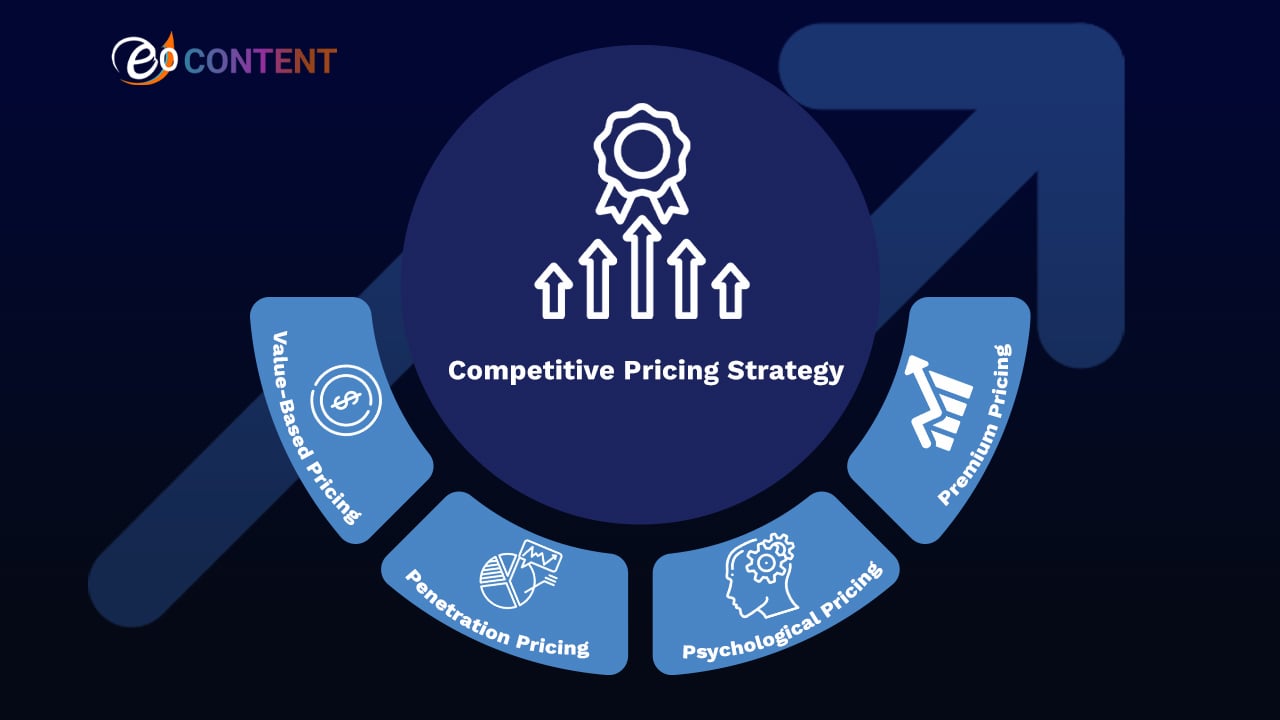Pricing is more than just assigning a value to your product or service it’s a strategic tool that can help you gain an edge over competitors. With the right approach, you can attract more customers, increase profitability, and establish your brand’s authority in the market.
In this guide, we’ll explore the top five pricing strategies that successful businesses use to stay ahead of the competition.
Competitive Pricing Strategy
Best for: Businesses in highly competitive markets.
With competitive pricing, you analyze your competitors’ prices and adjust yours accordingly. This approach helps you position your product as a viable alternative without overpricing or underpricing.
How to Implement It:
Conduct regular competitor price analysis.
Offer value-added services (e.g., free shipping, extended warranties) to differentiate yourself.
Use dynamic pricing tools to automate adjustments.
Value-Based Pricing
Best for: Premium brands and unique products/services.
This strategy focuses on how much value your product provides to the customer rather than the cost of production. Businesses using this model often charge higher prices but justify them with superior quality, features, or branding.
How to Implement It:
Understand customer needs and pain points.
Highlight unique selling points (USPs) and benefits.
Use testimonials and case studies to prove value.
Penetration Pricing
Best for: New businesses or product launches.
Penetration pricing involves setting an initially low price to attract customers and gain market share quickly. Once a strong customer base is established, prices gradually increase.
How to Implement It:
Offer limited time introductory discounts.
Ensure the price increase is gradual and justified.
Use upselling and cross-selling to maximize revenue.
Psychological Pricing

Best for: Businesses targeting price sensitive consumers.
Consumers often perceive prices differently based on how they are presented. Psychological pricing techniques make products appear more affordable and appealing.
How to Implement It:
Use charm pricing (e.g., $9.99 instead of $10).
Bundle products to create perceived value.
Offer tiered pricing to encourage upgrades.
Premium Pricing
Best for: Luxury brands and exclusive products.
With premium pricing, businesses charge higher prices to reflect exclusivity, quality, and prestige. This strategy works well for luxury goods, high-end services, and niche markets.
How to Implement It:
Build a strong brand identity.
Use high-quality materials and premium packaging.
Limit availability to create exclusivity.
Final Thoughts
Choosing the right pricing strategy depends on your business goals, market conditions, and target audience. Whether you focus on competitive pricing, value-based pricing, or premium pricing, your approach should align with your brand and long-term profitability.
By implementing these five powerful pricing strategies, you can outperform your competitors and position your business for success.

